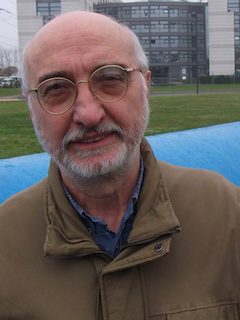
Vincenzo Cavasinni (UNIPI) is professor of experimental physics at the Physics Department of the University of Pisa. He graduated in Physics at the University of Pisa in 1973, he got his PhD from Scuola Normale Superiore in 1978. Employments: assistant professor in particle physics at the University of Bologna, scientific associate at CERN, research assistant at the Scuola Normale Superiore, associate professor and, from 2000, full professor at the Physics Department of the University of Pisa.
His research activity dates from 1973 in experimental particle physics at proton-proton, proton-antiproton colliders: ISR, p-pbar, LHC of CERN and neutrino physics, with leading roles especially in Higgs physics.
Teacher of classical and particle physics at University of Bologna and Pisa and at many summer schools at CERN and other European universities. Supervisor and referee on about 70 particle physics theses in Pisa and abroad.
His recent interest in Quantum Computing points to the study of possibilities of using Quantum Computing in high energy experiments both to improve the present offline analysis procedures of the large amount of collision data collected at high luminosity present and future colliders, and for efficient and fast online trigger schemes necessary to cope with the very high rate of collision events ( > 10 ^ 9) / s) expected at the new generation hadron colliders. Author and coauthor of about 1000 scientific articles, a fraction of them as single or a few author.
Some recent publications
-“Measurements of WH and ZH production in the H→b bbar decay channel in proton-proton collisions at 13 TeV with the ATLAS detector”. ATLAS Collaboration:e-Print: 2007 02873 [hep-ex] 2020, submitted to EPJC.
-“Search for heavy Higgs bosons decaying into two tau leptons with the ATLAS detector using proton-proton collisions at sqrt{s}=13 TeV”. ATLAS Collaboration: Phys.Rev.Lett. 125 (2020) 5, 051801.
-“FCC-ee: The Lepton Collider : Future Circular Collider Conceptual Design Report Volume 2” FCC Coillaboration: Eur.Phys.J.ST 228 (2019) 2, 261-623.
